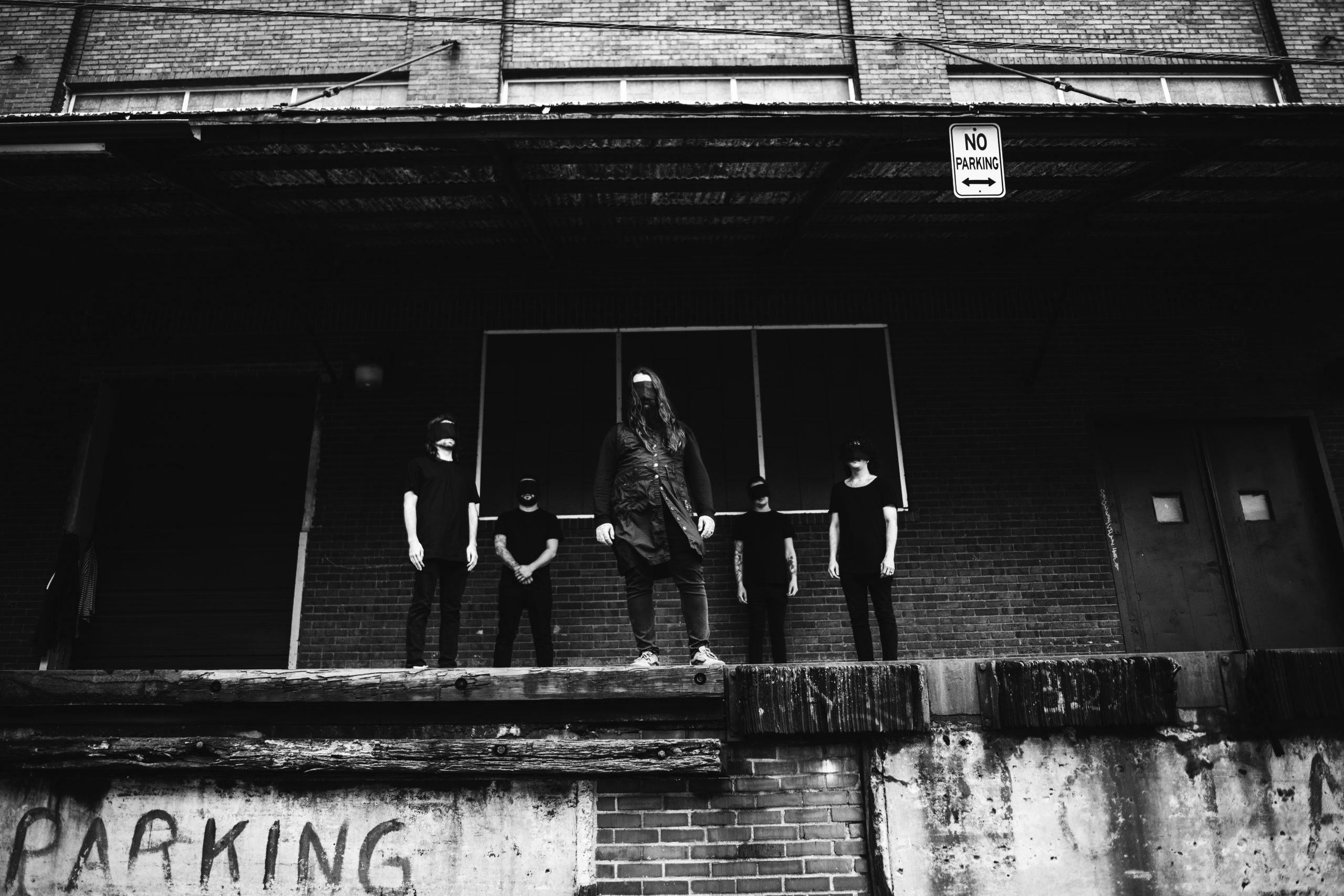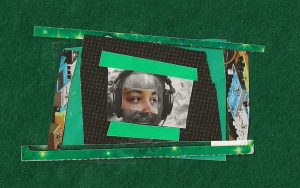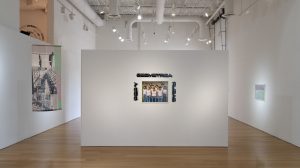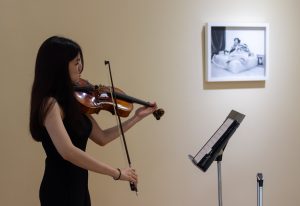Imagine closing your eyes during a live show, in the middle of the audience. The experience is a little uncomfortable and very vulnerable. The amplification of the sound. At any moment, someone might be looking at you, might bump into you. You won’t see it coming. Now imagine that instead of closing your eyes for a couple of seconds in the audience, you are the person performing…and you can’t see for the entire show. This is precisely what BOUND, a heavy metal band from Elgin, IL, does.
BOUND is frontman and vocalist Peter “Dirt” Brankovic, drummer Brett Meyer, bassist Willow Maze, and guitarists Anthony Vichio and Paul Hill. The band released their first album, Heaven Is Full of White Arches…but I Am a Sinner at My Core, this past March. I had the privilege of seeing their last scheduled show this year at Reed’s Local on July 17th, and was able to sit down and speak to Dirt, Brett, and Anthony two weeks later.
BOUND, dressed entirely in black, always performs with blindfolds on. During soundcheck, after tightly tying the masks over their eyes, they relearned the borders of their instruments, the positive and negative spaces surrounding them. Anthony rotates left to right, making sure the head of the guitar doesn’t hit Dirt — though later, I learn that there have been countless instances in which this happened anyway. Brett circles the cymbals and drum heads with his hands, then with the sticks, then crosses his arms across his chest and rocks back and forth, grinning into darkness. In the moment, this seemed very natural.
Brett contradicts this, admitting, “I add in my theatrics…I’m actively trying to make myself look creepy or like I’m going [wild].” It never crossed my mind that anything they were doing was purely for show, and even after this admission, it still feels authentic. The band’s shows certainly live as performance art: the roles of the band members are set, but those roles are malleable and interpretive. “It being performance art was the idea from the get,” said Dirt, “I’d rather someone see us live first and then want to listen to a song at home.” Brett succinctly claims, “I want the studio recordings to be phenomenal and I want the live show to be better than that. I want the live show to be an absolute experience.” And it certainly is.
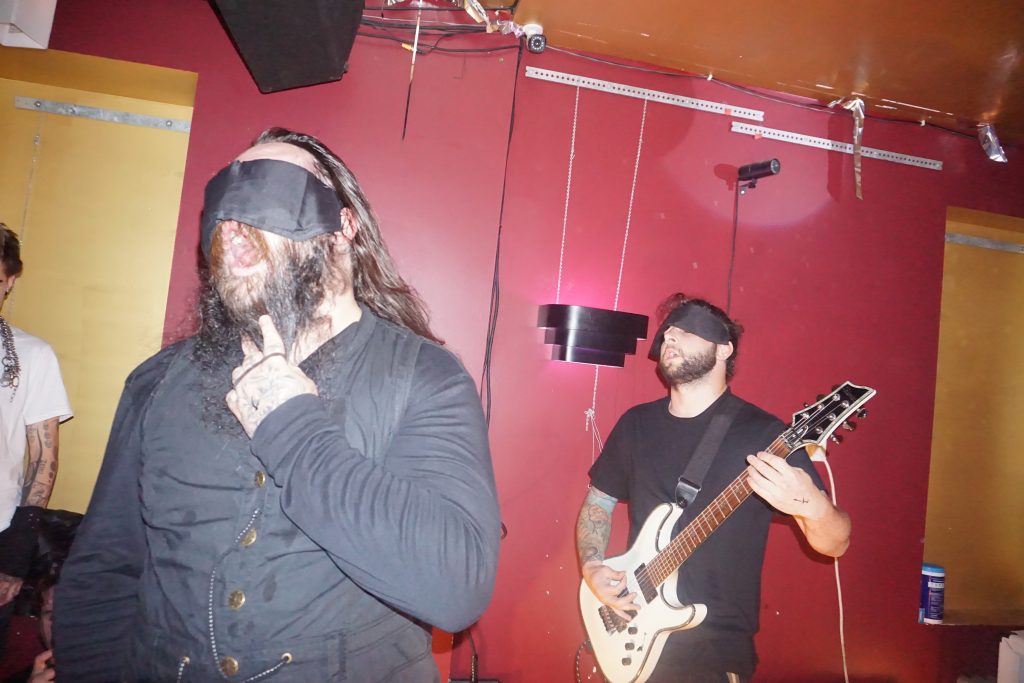
Of course, the pervasive question is: why the blindfolds? Dirt explains that they came about as a vehicle for “the anonymity of the members for […] this sort of, like, storyline concept that I was trying to create.” The question and preoccupation with faith and judgment is intrinsic to the band who circle around unanswerable questions of a religious order — what happens after we die? What punishment (or reward) will be exacted of us for the people we have been? Do we see ourselves clearly or are we blinded to our true natures? — not to provide answers, but to create a space to release the primal fear of not knowing. “The idea is that the members of BOUND are the arbitrators of limbo…[The record is] specifically about a […] man who is at the end of his life and […] was unable to see some of the hardships […] that he put his family through, as like, an abusive person and other things. And the story of the record is, arriving in limbo, a description of heaven and hell is given to him and then he is put through cases and shown who he was…on Earth, and then, I suppose at the end… instead of us making a decision for him, he is begging us instead of going to Heaven to go to Hell.”
Not so coincidentally, blindness is a signifier of being spiritually lost in the Bible, which makes sense for the band’s use of the blind man as an archetypal image with which to trace the story this album tells. Dirt clarifies that he is “by no way the blind man we speak of…we are the judges in that scenario,” but through ecstatic performance they invite you, the audience, to participate in the myth; then when you go home and play the record, to think about whether you are or might eventually be positioned in the scope of judge vs. judged.
Standing before the band, I couldn’t shake the uncanny feeling that we were making eye contact, when this was obviously impossible. I was just seeing myself. By covering their eyes, making themselves anonymous (in theory), BOUND facilitates the act of looking yourself in the face. This invitation is even more clear when one considers the fact that people are mirrors to each other — each interaction and connection a possibility to encounter and confront your own consciousness.
During the show the band members move like isolated parts of a whole: they are all enveloped in their own bodies, wholly focused on their instruments, but also listening and responding to each other — different cells in a singular organism. All the members agree that they enjoy playing heavy music because it functions as a vehicle for tapping into some intrinsic essence of being. Anthony admits, “I consider it my therapy…like being up in front of people, going [wild], it’s just — I don’t know — it feels good,” and Brett adds, “It feels primal…like tapping into the monkey part of my brain.” In my experience, the band taps into the primal aspects of what it means to exist in an animal body with a consciousness that sometimes works against you more than anything else. There is an obsession present in the record and the ferocity with which the music is played that’s interested in divorcing the self from this fear, while recognizing the inability to ever be free of it. To define yourself in opposition to something is still to be analytic on that thing, and BOUND very clearly presents the ways in which the animal body can never surpass itself, can never be the judge, even while impersonating the very figure.
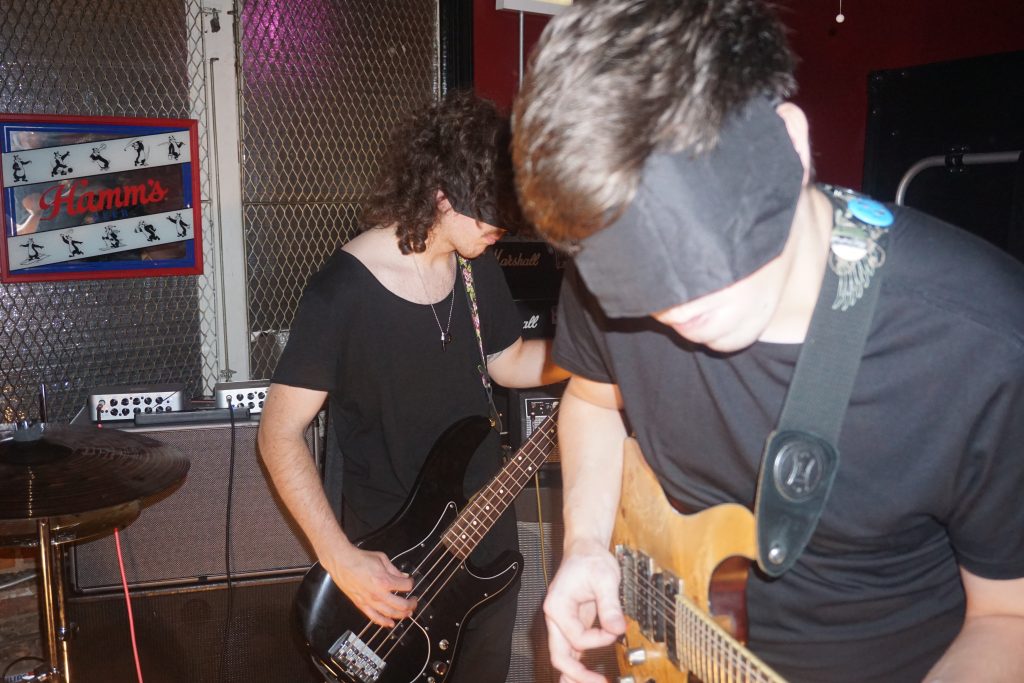
“You can’t hide any of the things you’ve done from an all-knowing God, so the inability to remember everything, the inability to fix everything, or the inability to be only a good person is difficult and it is fucking horrifying,” Dirt postulates. The band members have various spiritual beliefs. All were raised Catholic, but only Brett says he still “leans Christian,” while the rest identify as agnostic or atheist. Despite this, it’s quite clear that the question of judgment after death, a Christian ideal, figures heavily in the music. There is a sense that — through the music, through these live performances — the band is trying to work through some of this fear that might not always even be conscious, but is persistent nonetheless.
The band, conceived during the pandemic, wanted to find more connected and tangible ways to bring their music to people, so they decided on filming a live session at Side Street Studio Arts, an exhibition space and concert venue located in Elgin. One of the band’s original guitarists, Matt Fairless, was moving away from Chicago and this would be his last time officially playing with the band, so they only ran through their set two or three times before the day of the shoot. “We were throwing ourselves into the fire pretty quickly to see how it would work…[which] was great because I think then we had no problem in the future putting [the blindfolds] on and doing something with it.”
At one point during BOUND’s set at Reed’s, Dirt migrates into the crowd. He gracefully picks up the amp right in front of him and steps into a newly opened space on the floor. The crowd forms a halo around him, rapt with attention, and, once he returns to the set parameters of the stage, we all crowd back around, as if compelled. I don’t remember being in charge of my body in this moment — there was a push and pull and I was just responding — it felt like everyone around me was doing the same.
Religious ecstasy is believed to be an altered state of consciousness, characterized by reduced awareness of one’s surroundings and an expansion of the interior and spiritual states of awareness, often accompanied by visions and/or emotional and physical euphoria. The phenomena has been captured in countless artworks, most especially from the Renaissance and Baroque periods. One of the most famous depictions of this experience is the Ecstasy of Saint Teresa, a white marble statue elevated in a small shrine, created by Gian Lorenzo Bernini. Saint Teresa described her spiritual experience in her autobiography, claiming she “saw in [the angel’s] hand a long spear of gold…He appeared to me to be thrusting it at times into my heart…The pain was so great, that it made me moan; and yet so surpassing was the sweetness of this excessive pain, that I could not wish to be rid of it…The pain is not bodily, but spiritual; though the body has its share in it. It is a caressing of love so sweet.”
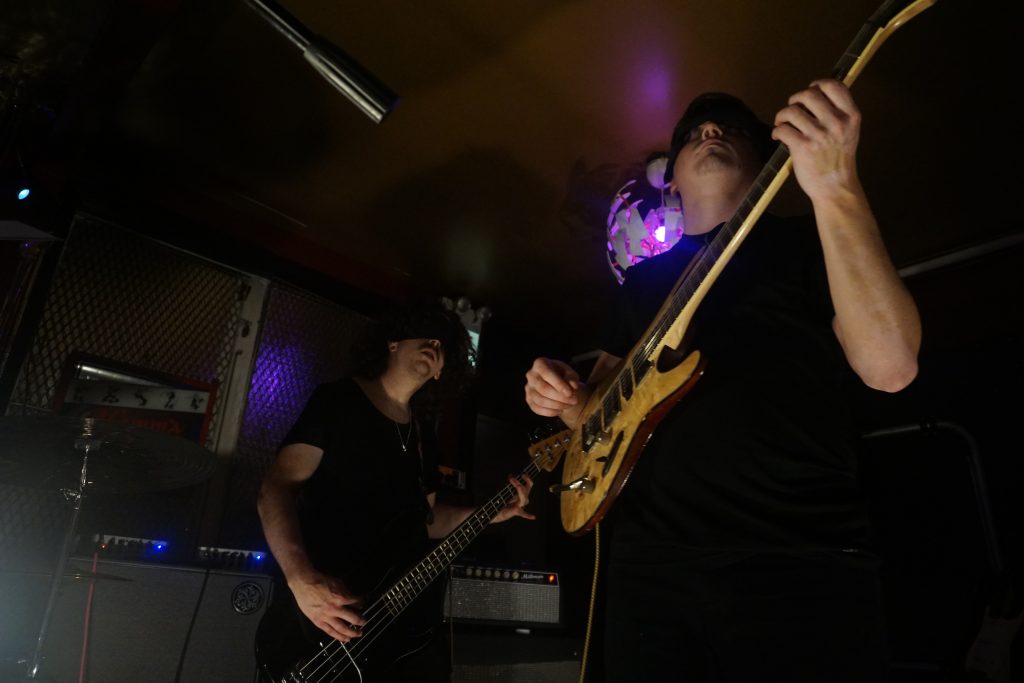
Any emotion or experiential state of being is most often regarded and felt internally. However, the word “ecstasy” comes from the Greek ekstasis, meaning ‘standing outside oneself.’ The transcendent experience is felt through the body, but cannot be entirely lived inside of it — you observe yourself experiencing — and how else to describe a transcendent religious experience than to ground it in a primal, human one? In taking on the role of arbiters of faith and considering so many factors in the way they present their live shows, the members of BOUND are orchestrating a ritual during their shows. Ritual being defined as a determined mode of action that classifies everything in the realms of the sacred (transcendent) and the profane (the realm of tangibility).
Dirt explains that a goal of their live performances is to “encompass all of the senses.” Sight and sound are self-evident, but then they engage touch through the colossal reverberations of sound, and through the tactility of being in the crowd; incense is burned through the duration of the show; and the band’s merchandise includes a jalapeño wild berry jam, a limited run of coffee that they collaborated with a local coffee shop to roast, and a moonshine. On a day-to-day basis, people don’t experience stimuli that trigger all five senses so dramatically: here, you end up feeling both inside and outside of the body when it happens, witnessing and experiencing yourself in witness. As far as musical experiences go, there is nothing quite as profane — and maybe holy — as a heavy metal show, especially one like this. The intentionality behind the concept, compounded with the cohesive attire of the band, and the seriousness with which they play through their set clearly communicates the ritualistic nature of the live shows, intent on facilitating a bridge between the here and now, and the certain eventuality of death, intent on opening a conversation about the nature of that bridge.
BOUND’s live sets also incorporate samples not present on the record. At the end of all of their shows, they close out on such a sample, most often either “Bound 2” by Kanye, or “Delta Dawn”’ by Tanya Tucker, depending on the vibe of the show. At Reed’s Local, the closer was “Bound 2.” As the final chords of their last song faded out, Kanye’s voice took over, insisting again and again, we are “bound to fall in love.” When I asked the band about the sample, Dirt started laughing, “we are so serious for just under twenty minutes and at the end, that plays…” Though they intended the song to be a humorous interjection to finish their set, it provided me with respite, a sort of comedown. The band stands, gripping their instruments in silence as the chorus reverbs, Dirt warping Kanye’s words, replaying them again and again. It is a beautiful release back into physicality, easing the crowd’s feet back on the ground after an ecstatic experience, a soft and careful landing. It reminds us that we have a body, and now we have to be in charge of it again.
When the final note of the sample echoes out, BOUND take off their masks and clean up, joking with the audience. It’s hard to wrap your head around the fact that it’s the same people who, seconds before, were orchestrating nothing short of a religious experience.
You can find BOUND on Instagram as @bound_death and listen to their album, Heaven is Full of White Arches…but I Am a Sinner at My Core wherever you stream music.
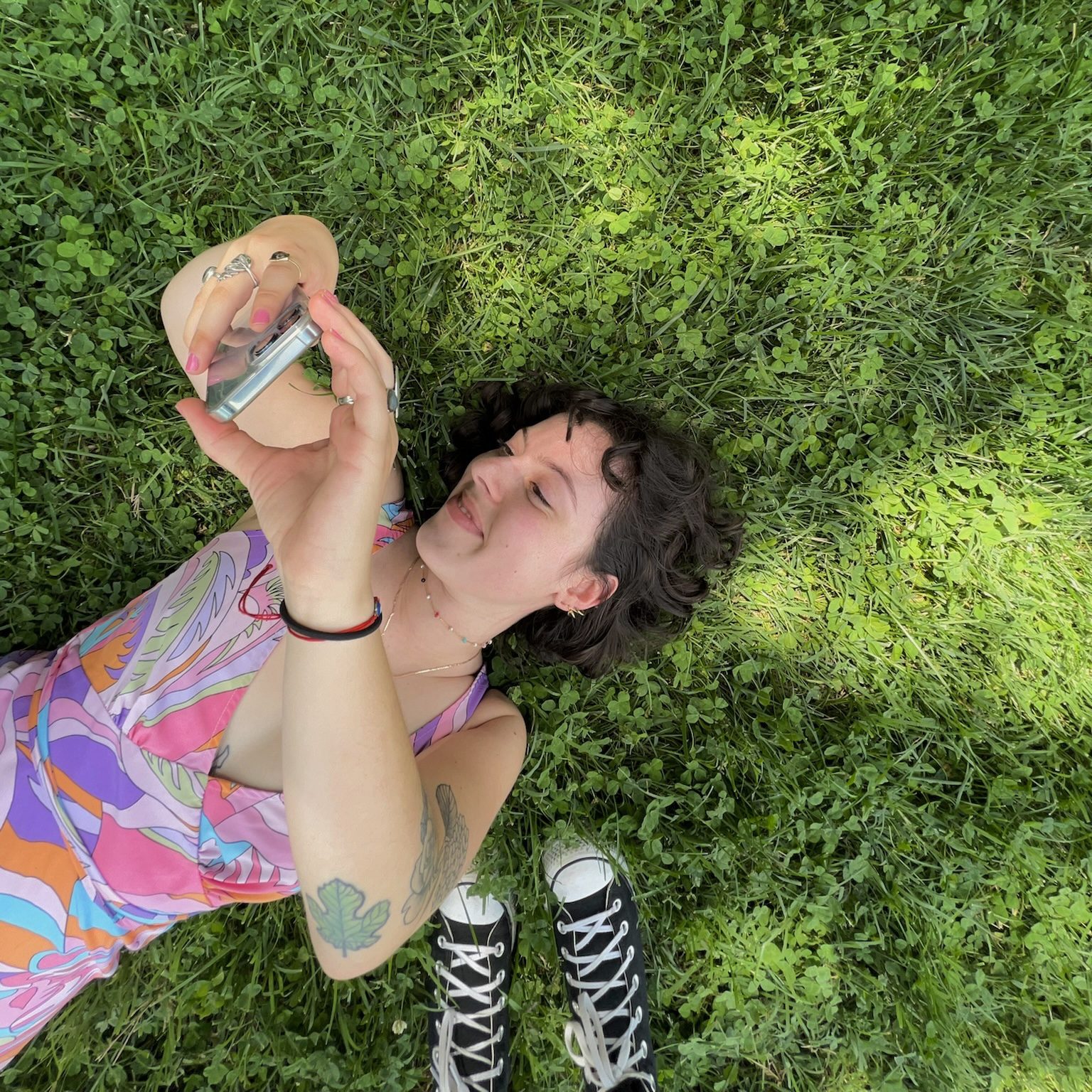
About the Author: Yoana Tosheva (she/her) is an artist, a writer, and an immigrant. Her work has previously appeared in Sixty Inches From Center, FF2 Media, Red Fez, Sunlight Press, West Trade Review, Brazos River Review, and elsewhere. You can find her visual art on Instagram @yoana_art and her music blog at https://collectivecadence.home.blog/.
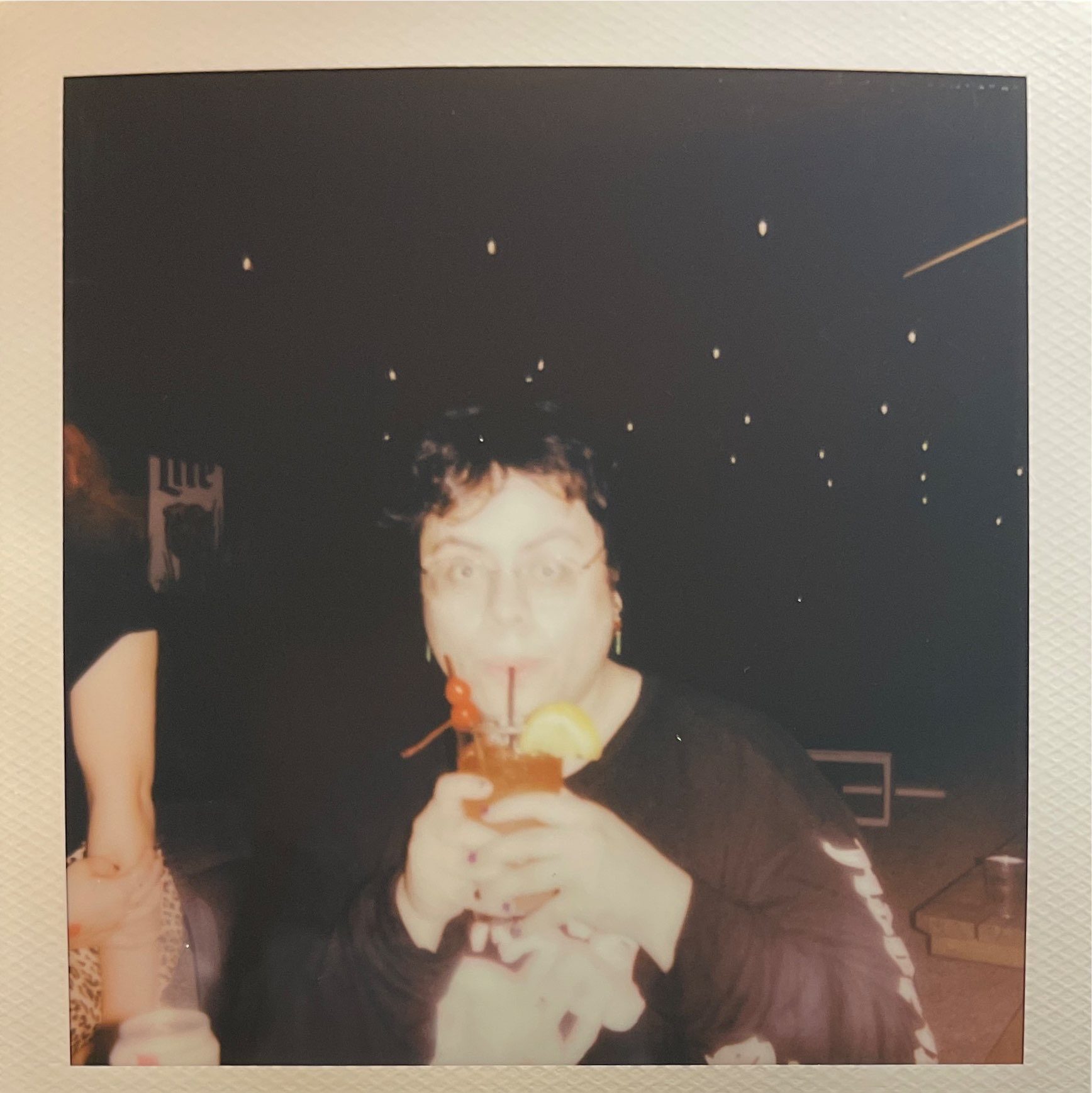
About the Photographer: Hector Frias (they/them) is a photographer from the Chicago suburbs. They enjoy being able to showcase the very talented artist in their area. When they’re not doing photography they spend their time in collaboration with a local zine @pinkslipzine
